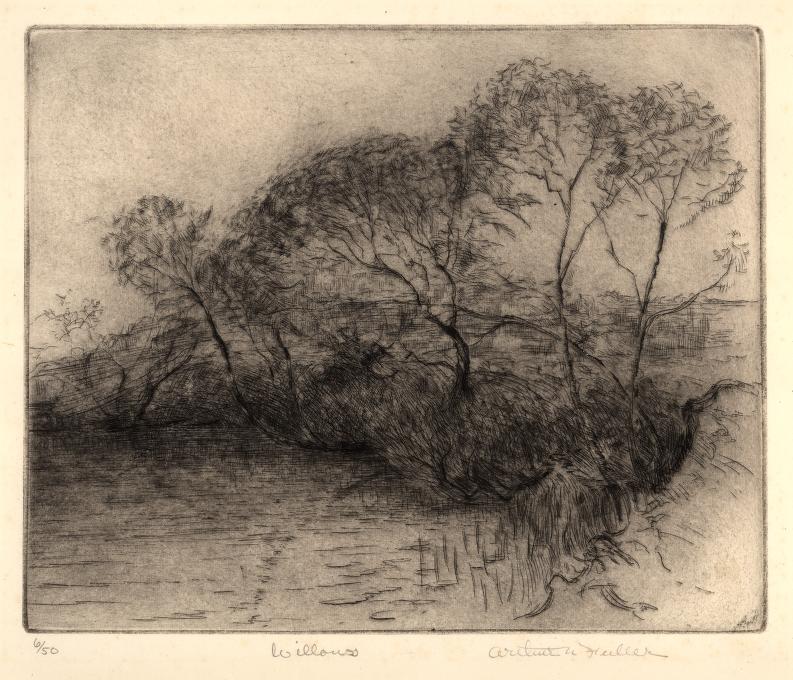




Advanced Search
| Online Collection |
|
||||||||||||||||||||||
|
Arthur Negus Fuller (1879-1945) understood that the lines he drew were only the first step in creating a successful etching. The inking and wiping of the plate before it was printed was the second step. By leaving more ink on the plate at the river's edge, Fuller was able to add depth and tone to this landscape. By wiping away more ink, he lightened the foreground and sky. In 1935, Fuller exhibited Willows in the Deerfield Valley Art Association exhibition at the Hall Tavern in Charlemont, Massachusetts. Arthur was the youngest son of George and Agnes (Higginson) Fuller of Deerfield, Massachusetts. In addition to his father being a painter, his siblings were also artists. In 1915, Arthur purchased the Little Brown House and studio barn on Albany Road. That same year, Fuller began printing monotypes. In 1919, he bought a printing press with his brother, Henry, for their shared Boston studio, and in 1920, they bought a second press for their studio at the Little Brown House. Arthur's first intaglio etchings date from this time. His earliest intaglio, or colored, etchings were printed with a single pass through the press. Fuller accomplished this by first inking the lines on the copper plate, wiping off the excess, then lightly daubing ink where he wanted color, using the tip of a twisted cloth, à la poupée. Consequently, each intaglio print in an edition is slightly differently from the next.
|
"Willows"
|
| |
Home | Online Collection | Things
To Do | Turns
Exhibit | Classroom | Chronologies | My
Collection
About This Site | Site Index | Site Search | Feedback


